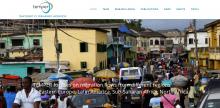Temporary versus Permanent Migration (TEMPER)

The overall objective of the TEMPER project consists in providing a comprehensive assessment of the pros and cons of recent initiatives to promote circular migration, as an alternative to more traditional forms of temporary and permanent migration. These initiatives often rely on a poor understanding of the reasons why some migrants spontaneously return an circulate, and others do not. To overcome this lack of understanding, the TEMPER project will pursue three main objectives:
1. it will identify the main drivers of return and circulation decisions of migrants recently involved in temporary and permanent migration,
2. it will measure and explain the role that different programs, and immigration policies at large, have played in shaping those individual decisions and,
3. it will assess the impact that different types of temporary, permanent and circular mobility have for migrant and non-migrant workers, their families and their employers.
The work in TEMPER is focused on a number of countries from four major geographic sending areas, namely: Eastern Europe (Romania, Ukraine), Latin America (Colombia, Argentina), Sub-Saharan Africa (DRC, Ghana, Senegal), North Africa (Morocco). The destination countries under analysis are: France, Italy, Spain and UK.


